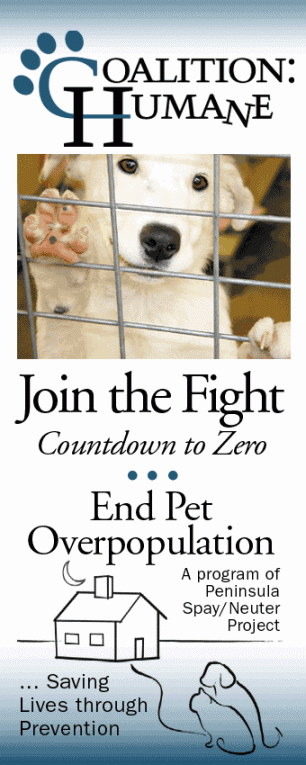
 DAVID GARD / AP Feral cats gather for mealtime on Friday at Douglas Memorial Park in Cape May, N.J. Volunteers feed the cats daily. | |
CAPE MAY, N.J. — Cats are as much a part of Cape May's beach-town culture as rainbow-color Victorian bed-and-breakfasts, trolley tours and cocktails on the porch at sunset.
They're also suspect No. 1 in many deaths of the endangered piping plover, a fist-size, white-and-brown fuzzball of a bird that has closed beaches and stopped development projects in the interest of protecting their habitat.
With 115 pairs of piping plovers left in New Jersey, the federal government may intervene on the side of the birds, which has set fur and feather flying in Cape May. Cat lovers fear the roaming felines will be euthanized; bird lovers are wary of a rare species being wiped out.
"This is a very emotional issue; this really is a cat town," resident Pat Peckham said. "I think they should leave the cats where they are. I'm a firm believer in letting nature take its course."
A cat's nature and its appetite for critters are what have bird enthusiasts concerned.
Cape May is one of the prime bird-watching spots in all of North America; the World Series of Birding is held here each year. And with bird watching and related expenditures bringing in nearly $2 billion a year to New Jersey's economy, the feathers may win this fight.
The plovers, which breed on East Coast beaches during warm weather, nest in sandy, open stretches of beach, making them and their chicks easy prey for a variety of predators, including foxes, gulls, raccoons and cats.
"I think the cats are more of a nuisance than anything else," resident Bill Schemel said. "They're killing endangered birds that belong out here. Cats are not part of the natural environment. They're here because someone's cat had a litter and they dumped them out in the woods."
So far this year in New Jersey, cats are the prime suspects in the deaths of three endangered birds, including plovers.
As part of federally mandated beach-management programs, communities with populations of threatened or endangered species are required to prevent the birds from being harmed.
Biologists said beach closures, twine barriers and other buffers between birds and humans are paying off: Plover populations along the East Coast have rebounded from 722 pairs in 1985 to 1,743 pairs this year, federal officials said.
Annette Scherer, a senior biologist with the Fish and Wildlife Service, said the agency is studying the situation in Cape May. Possible recommended changes could include asking the city to adopt laws requiring cats to be licensed, prohibiting free-roaming cats or prohibiting abandonment of cats and feeding of wildlife.
For the past 12 years, Cape May has been attempting to keep its feral-cat population in check through a program known as trap, neuter and release, said John Queenan, the city's animal-control officer.
But a May 18 fire destroyed a trailer that a local animal-rescue group had used to house cats for the program, killing 37. A replacement is not ready, and fewer cats are being picked up.
Eric Stiles, vice president of the New Jersey Audubon Society, is working on a pilot project to find a middle ground.
The program would bring together animal-control officials with bird- and cat-advocacy groups to share information on known locations of endangered birds and cat colonies. Cats that are near endangered birds could be relocated, while others deemed to be sufficiently far away could continue undisturbed.
 THE WASHINGTON HUMANE SOCIETY and Alley Cat Allies, an organization that advocates reducing feral cat populations, are partnering up to launch the region's first-ever low cost animal spay and neuter center. The facility, to be located near the Washington Navy Yard and Barracks Row at 1001 L St. SE, will open Oct. 4.
THE WASHINGTON HUMANE SOCIETY and Alley Cat Allies, an organization that advocates reducing feral cat populations, are partnering up to launch the region's first-ever low cost animal spay and neuter center. The facility, to be located near the Washington Navy Yard and Barracks Row at 1001 L St. SE, will open Oct. 4.


